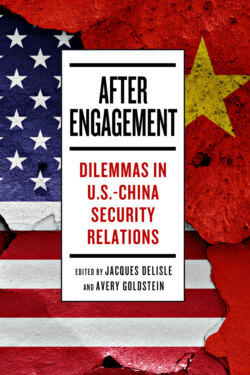Читать книгу After Engagement - Группа авторов - Страница 18
На сайте Литреса книга снята с продажи.
CHINA’S MORE COMPETITIVE AND ASSERTIVE BEHAVIOR
ОглавлениеTo lay the foundation for explaining China’s more assertive behavior, this section provides a brief summary of China’s key security and geopolitical behavior. The broad sweep of concerns about China are captured in the following statement from the 2018 National Defense Strategy: “China is leveraging military modernization, influence operations, and predatory economics to coerce neighboring countries to reorder the Indo-Pacific region to their advantage.”4 China has pursued a decades-long buildup of its conventional forces, substantial modernization and expansion of its nuclear forces, and assertive policies in the South China and East China Seas, as well as a variety of trade and cyber policies that the United States considers unfair. In light of these actions, many experts have concluded that China is placing greater importance on prevailing in its maritime disputes and, therefore, has largely abandoned its “peaceful rise” strategy, which was intended to avoid scaring neighboring countries and, thereby, provoking military buildups and the formation and deepening of opposing alliances.5
Since the mid-1990s, China has transformed its conventional military forces. Fueled by increases in defense spending of around 10 percent a year for over two decades, China has deployed modern air and naval forces that have significantly closed the gap with US forces. The United States retains advantages in most individual systems, and its defense spending still dwarfs China’s (greater than $600 billion to approximately $200 billion, and over 3 percent of US GDP compared to less than 1.5 percent of China’s GDP). But the US ability to perform key military missions has been significantly reduced. In large part, this reflects the military implications of geography—the key scenarios the United States plans for will take place near China and far from the United States. China’s anti-access/area denial (A2/AD) systems have greatly reduced the ability of the United States to operate military forces near its coastline.6 Maybe most consequential, Chinese modernization has greatly increased its ability to challenge Taiwan, including via blockade.7
China is also modernizing its strategic nuclear force. Although China’s force remains small compared to the US nuclear force, China is deploying systems designed to survive a US nuclear attack, including mobile intercontinental ballistic missiles (ICBM) and a new generation of ballistic missile submarines (SSBN). The ICBMs are most significant because China’s SSBNs are highly vulnerable to US anti-submarine warfare. China’s modernization is eliminating the US ability to limit damage in an all-out war. As a result, the United States is arguably losing a bargaining advantage in conventional conflicts that could escalate to large nuclear war.8
In addition to these military buildups, starting in the late 2000s, China adopted more assertive policies in the South China and East China Seas.9 For many US analysts, these policies have had a larger impact on assessments of China’s motives and goals than has its military buildup. Key examples include China’s 2012 use of maritime militia/patrol ships to prevail over the Philippines in a dispute over the Scarborough Shoal10; a series of persistent and increasingly risky operations against the Senkaku/Diaoyu Islands in response to Japan’s purchase of the islands in 2012; a crisis initiated by the installation of a large oil rig by a Chinese-controlled oil company in waters claimed by Vietnam11; China’s establishment of an air defense identification zone over part of the East China Sea in 2013; and numerous incidents between US and Chinese military forces within China’s Exclusive Economic Zone (EEZ).12 Maybe most significant, beginning in late 2013, China began island-building in the South China Sea and subsequently constructed military-capable facilities on these islands, including long runways, large port facilities, reinforced hangers, and communications facilities. And in 2016, China rejected the legitimacy of the findings of an international tribunal that ruled broadly against China’s claims in the South China Sea, including the nine-dash line and EEZs for features in the Spratlys.13
Beyond these security issues, a variety of other Chinese policies have contributed to increasing strains in the US-China relationship. Among these policies are China’s increasingly repressive domestic policies; its state-led development and technology policies; its unfair trade practices; its use of cyber-related activities to steal intellectual property from US businesses and sensitive information from the US government; and its failure to share early information on the coronavirus. Although not directly related to China’s foreign policy goals, the result has been a more negative overall view of China, which has supported assessments that find China’s military buildup and policies along its maritime periphery to be more dangerous than in the past. In contrast to the Obama years, during the Trump years there was a growing consensus among Republican and Democrat elites that the United States should adopt an increasingly tough, competitive stance toward China. Early indications are that the Biden administration will be guided by this more negative, threatening view of China.
